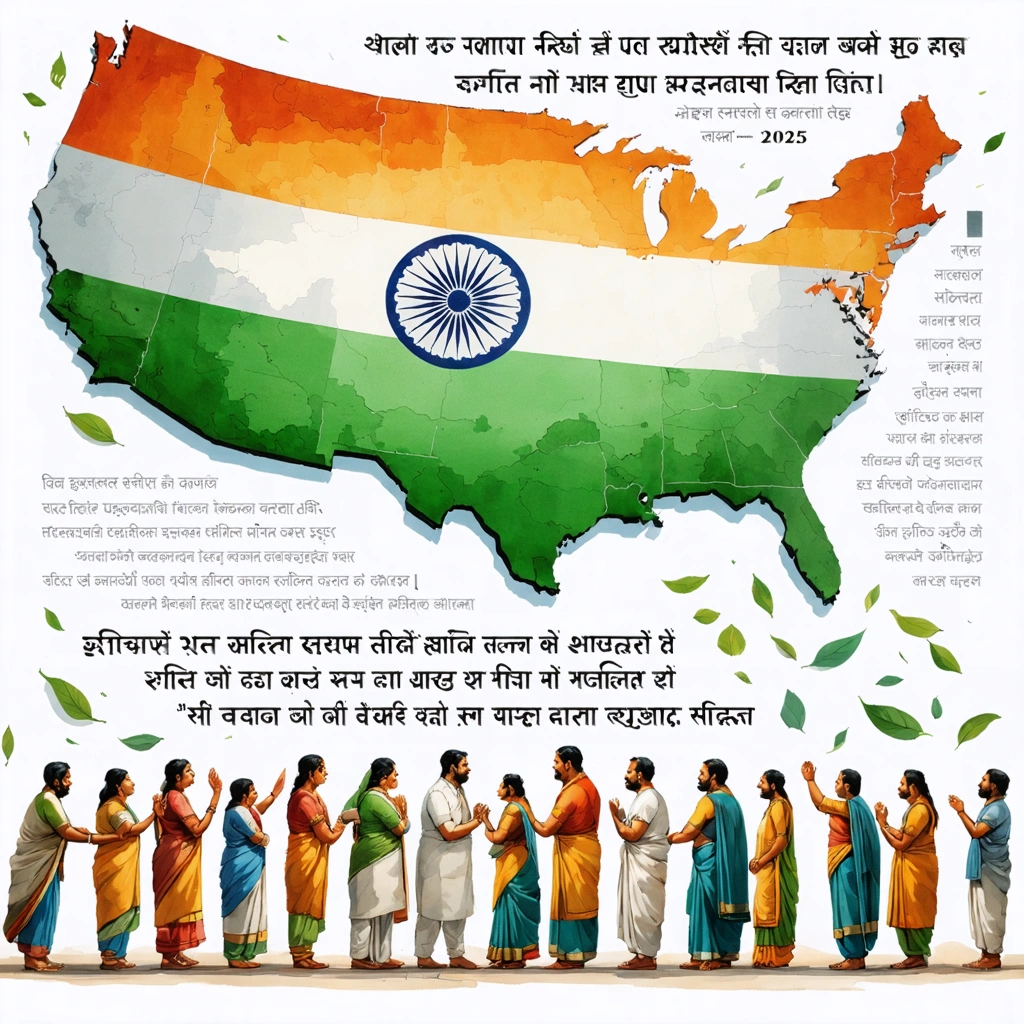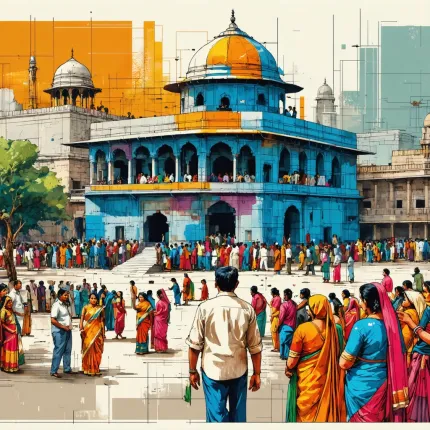The Urgency Behind Bharat Ke Nirvachan Aayog Ke Reforms
Imagine a democracy where every vote counts fairly, where election processes are transparent, and where electoral integrity is beyond question. For a vibrant democracy like India, this vision is not just desirable—it’s essential. Yet, as we approach 2025, the Indian electoral system faces multifaceted challenges that demand immediate attention. From outdated procedures to emerging technological risks, the need to rethink and rejuvenate how elections are conducted has never been more pressing.
“Bharat Ke Nirvachan Aayog Ke Reforms” have been a buzzword among political analysts, policymakers, and the electorate alike. But what exactly does it entail? Why is there a growing call for these reforms, and how do they promise to reshape the democratic fabric of India? Whether you’re a student trying to understand the electoral landscape, a policy enthusiast, or a concerned citizen eager to cast an informed vote, this discussion is for you.
In exploring the Bharat Ke Nirvachan Aayog Ke Reforms PDF that have been circulated among government circles and public forums, one finds a comprehensive blueprint aimed at addressing systemic inefficiencies. But beyond the bureaucratic jargon, these reforms are about making elections more inclusive, credible, and robust in the face of contemporary challenges. The stakes are high, and the spotlight is firmly on the Election Commission of India (भारत के निर्वाचन आयोग) as the custodian of this democratic process.
What’s at Stake? Why Now?
India’s electoral system, while hailed globally for its scale and scope, grapples with complications such as electoral malpractices, voter disenfranchisement, and logistical hurdles. With over 900 million eligible voters expected in 2025, the sheer magnitude of conducting free and fair elections is mind-boggling. The existing systems, though evolved over decades, show signs of strain under this enormous pressure.
Consider this: reports indicate that a significant percentage of electoral rolls contain inaccuracies, leading to concerns about phantom voters and genuine voters being left out. Moreover, the role of money power and misinformation during campaigns threatens the very essence of democratic choice. The Election Commission’s efforts, while diligent, have often been reactive rather than proactive in tackling these issues.
How do we ensure that the electoral machinery keeps pace with technological advances without compromising security? How can voter education and participation be enhanced in a diverse and multilingual country? The answers lie in a thoughtful, well-structured reform agenda—precisely what the Bharat Ke Nirvachan Aayog Ke Reforms in Hindi documents emphasize.
Snippets From the Reform Agenda
- Digitization and Data Integrity: Leveraging technology to maintain up-to-date and accurate voter lists.
- Enhanced Transparency: Introducing mechanisms to track campaign financing and curb illicit funding.
- Voter Awareness Programs: Expanding outreach in rural and marginalized communities.
- Stricter Enforcement: Strengthening legal frameworks to deter electoral offenses.
These are just glimpses of a much broader strategy that aims to future-proof Indian elections against emerging vulnerabilities.
How This Article Will Guide You Through Bharat Ke Nirvachan Aayog Ke Reforms
Throughout this article, we will delve into the heart of the electoral reforms slated for 2025. Starting with a detailed breakdown of the key proposals within the Bharat Ke Nirvachan Aayog Ke Reforms PDF, we’ll analyze their potential impact on voters, political parties, and the democratic process as a whole.
We’ll also take a close look at the challenges in implementing these reforms, including political will, administrative capacity, and public perception. What do citizens think about these changes? How prepared is the Election Commission to tackle such a mammoth task? These questions will be explored with insights drawn from experts, recent data, and real-world examples.
Finally, for those who prefer content in their mother tongue, we’ll highlight resources related to Bharat Ke Nirvachan Aayog Ke Reforms in Hindi, ensuring accessibility and deeper understanding among Hindi-speaking populations—a crucial demographic in India’s electoral map.
By the end of this read, you will not only grasp why electoral reform is indispensable for India’s democracy in 2025 but also appreciate the complexities and hopeful prospects these reforms bring. So buckle up for an enlightening journey into the evolving world of Indian elections—a saga of democracy striving to stay true to its promise in the 21st century.

Electoral Systems’ Reforms: Exploring Reforms in India’s Electoral Systems for 2025
India’s electoral system has been a cornerstone of its democratic framework, enabling free and fair elections across the vast and diverse country. As the nation approaches the 2025 general elections and various state elections, there is increasing discourse around the need for comprehensive reforms to improve transparency, efficiency, and inclusiveness. The topic of Bharat Ke Nirvachan Aayog Ke Reforms (Election Commission of India reforms) is central to this discussion, especially as stakeholders seek to understand the evolving nature of election management and governance.
What Are the Major Challenges Driving the Need for Electoral Reforms in India?
Before we delve into the specific reforms, it is essential to understand the challenges that motivate changes in the electoral system:
- Electoral Malpractices: Issues such as vote-buying, intimidation, and misuse of money power have threatened the sanctity of elections.
- Voter Apathy and Low Turnout: Despite a large electorate, voter turnout in some regions remains a concern, necessitating reforms that encourage participation.
- Complexity of the Electoral Process: Managing elections across 900+ million eligible voters requires continuous modernization and simplification.
- Technological Challenges: Ensuring secure and transparent voting mechanisms, including Electronic Voting Machines (EVMs), has been a persistent topic.
- Representation and Inclusion: Addressing issues related to the representation of marginalized communities and ensuring fair candidate selection.
Key Proposed and Implemented Bharat Ke Nirvachan Aayog Ke Reforms for 2025
The Election Commission of India (ECI), or Bharat Ke Nirvachan Aayog, has been proactive in proposing and implementing reforms to address these challenges. Here are some of the significant reforms either underway or proposed for the 2025 electoral cycle:
1. Introduction of Voter Verified Paper Audit Trail (VVPAT) Expansion and Upgradation
Since 2013, VVPAT machines have complemented EVMs to enhance transparency by allowing voters to verify their vote on a paper slip. The reform agenda includes:
- Increasing the use of VVPATs in all booths to build trust in electronic voting.
- Upgrading VVPAT technology for faster counting and improved accuracy.
2. Electoral Roll Accuracy and Digitization
Maintaining an accurate electoral roll is critical. Bharat Ke Nirvachan Aayog Ke Reforms aim to:
- Implement continuous updating and real-time correction mechanisms.
- Use biometric data and Aadhaar authentication to reduce duplicate and bogus entries.
3. Campaign Finance Reforms and Transparency
To curb the excessive and often opaque use of money in elections:
- Stricter disclosure norms for candidate funding are being enforced.
- Limits on election expenses are monitored with greater technological assistance.
4. Use of Artificial Intelligence and Data Analytics
Emerging reforms include leveraging AI and data analytics for:
- Detecting electoral malpractices in real-time.
- Enhancing voter awareness by targeted communication.
5. Enhanced Voter Education and Accessibility Initiatives
To increase voter turnout and inclusivity:
- Special drives and digital tools in local languages to educate voters.
- Improving accessibility for persons with disabilities and senior citizens.
Where Can One Access Detailed Documents on These Reforms?
For researchers, policymakers, and citizens wanting in-depth information, official documents such as the Bharat Ke Nirvachan Aayog Ke Reforms PDF provide detailed insights. These PDFs often include:
- Legislative amendments and notifications.
- Annual reports on election management and performance.
- Guidelines on voting procedures and candidate conduct.
These resources are available on the Election Commission’s official website and can be found with a search query including Bharat Ke Nirvachan Aayog Ke Reforms PDF.
How Are These Reforms Communicated to the Public, Especially Hindi-Speaking Voters?
India’s multilingual population necessitates accessible communication. The Election Commission publishes and promotes many materials under the banner of Bharat Ke Nirvachan Aayog Ke Reforms in Hindi. This includes:
- Voter education booklets and flyers in Hindi.
- Video campaigns and tutorials explaining electoral processes.
- Interactive platforms and helplines offering assistance in Hindi.
This approach ensures wider reach and encourages informed participation among Hindi-speaking voters, which constitute a significant portion of the electorate.
What Can We Learn from Past Electoral Reforms and Their Impact?
India’s electoral reforms have historically contributed to strengthening democracy:
- The introduction of EVMs in 1999 drastically reduced booth capturing and vote rigging.
- Mandatory disclosures of candidate assets and criminal records have increased transparency.
- The Model Code of Conduct regulates party behavior during elections, fostering fairness.
For 2025, building on these successes with new technological and procedural reforms is expected to further enhance the credibility and efficiency of the electoral system.
Conclusion: The Road Ahead for India’s Electoral System
As India gears up for the electoral cycle of 2025, the Bharat Ke Nirvachan Aayog Ke Reforms play a vital role in shaping a democratic process that is transparent, inclusive, and technologically advanced. Continuous innovation, coupled with robust legal frameworks and public engagement, will be key to overcoming existing challenges.
For citizens and stakeholders wanting a comprehensive understanding, exploring the Bharat Ke Nirvachan Aayog Ke Reforms PDF and accessing materials available in Hindi ensures informed participation and trust in the electoral process.




